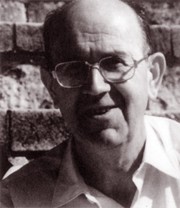
“[…] for his major contribution to the introduction of new technologies in ophthalmology, in particular the use of pulsed lasers to perform procedures directly inside the eye.”
Die Gutachter sahen in F.s Arbeiten eines der seltenen Beispiele subtiler, experimenteller Forschung und ihrer Übertragung auf die klinischen Erfordernisse. Dank seinen Kenntnissen sowohl in der klinischen Ophthalmologie als auch in der Physik und Mathematik seien die von ihm entwickelten Geräte für den täglichen klinischen Gebrauch ausserordentlich nützlich geworden. Besonders hervorgehoben wurde der im Preisjahr fertiggestellte Nd-Y-Ag-Laser. Mit seiner Wellenlänge nahe dem Infrarotbereich, wodurch nicht pigmentierte, d.h. weisse Strukturen zur Auflösung gebracht werden können, besitze man jetzt ein äusserst effektives Gerät für die Behandlung des akuten Glaukoms (erhöhter intraokularer Druck) und für die Behandlung von Nachstarmembranen in der Pupillarebene vor allem nach Einsetzung einer künstlichen Linse nach einer Staroperation.

